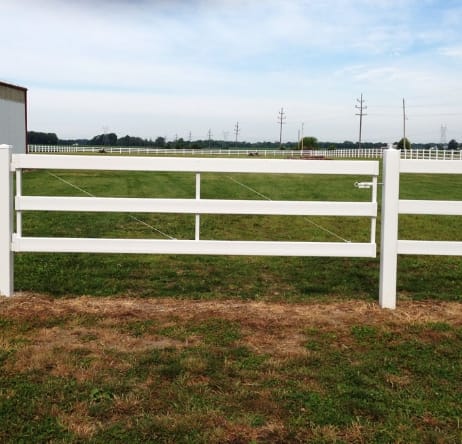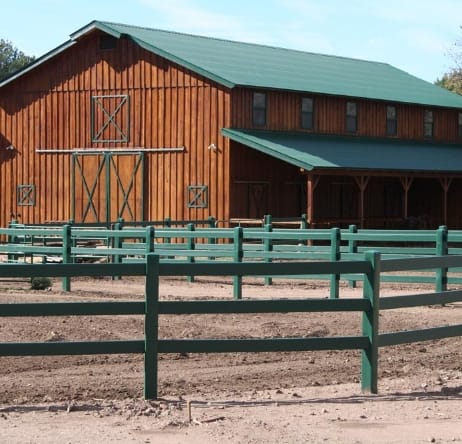Pasture Fence Pricing: How Much Does Pasture Fencing Cost?
Choosing the right pasture fencing is one of the most important decisions for any livestock…
Derby Fence - The Ultimate Fencing Solution for Any Climate
Thank you for purchasing your Derby Fence. Before starting your installation, be sure to check local codes and permit requirements. Also, contact your local utility companies to check for underground utilities, such as electrical, plumbing, or cable.
Derby Fence does not do installation. However, we are happy to be a resource for installers throughout the process and help troubleshoot any installation questions. Please contact Derby Fence for any additional installation instructions.


| ITEM NUMBER | DESCRIPTION |
|---|---|
| 1 | FENCE POST |
| 2 | 16 FT RAIL |
| 3 | 8 FT RAIL |
| 4 | POST CAP |
| 5 | CAP CLIPS |
| 6 | SPRING BUTTON CLIPS |
| ITEM NUMBER | DESCRIPTION |
|---|---|
| 1 | FENCE POST |
| 2 | 16 FT RAIL |
| 3 | 8 FT RAIL |
| 4 | POST CAP |
| 5 | CAP CLIPS |
| 6 | SPRING BUTTON CLIPS |
With the darker colors, during the heat of the day you can expect to see an 8’ rail bow out around 1” to 2”, however, it will return again once the sun has shifted away from direct exposure. This is a natural movement inherent in the plastic material and will not affect the performance of a properly installed fence. A 16’ rail will not be as severe due to being contained in the center post.
We recommend, for the 8’ rail sections, that you insert a 3⁄4” thick wall conduit or rip with the grain a 3/4” plank to 1” wide strips and or a 1” galvanized electrical conduit to accomplish the same task if that deflection is a visual concern.
Occasionally, you might have posts centered either smaller or larger than the standard lengths due to the property layout. In such cases, you would need to cut the rail length 1/2″ shorter than the center-to-center distance to compensate for expansion and drill two 7/16″ holes through the rail to insert the spring button clip.
Choosing the right pasture fencing is one of the most important decisions for any livestock…
Building a pasture fence is one of the most foundational improvements you can make to…
Ask five ranchers what they paid for fencing and you’ll hear five different numbers—and five…
Call us today at 1.847.680.1550 or use the email contact form below to request information or get a quote from Derby Fence. All fields must be filled in to submit form. Please include your address if you would like more information mailed to you. We look forward to working with you!